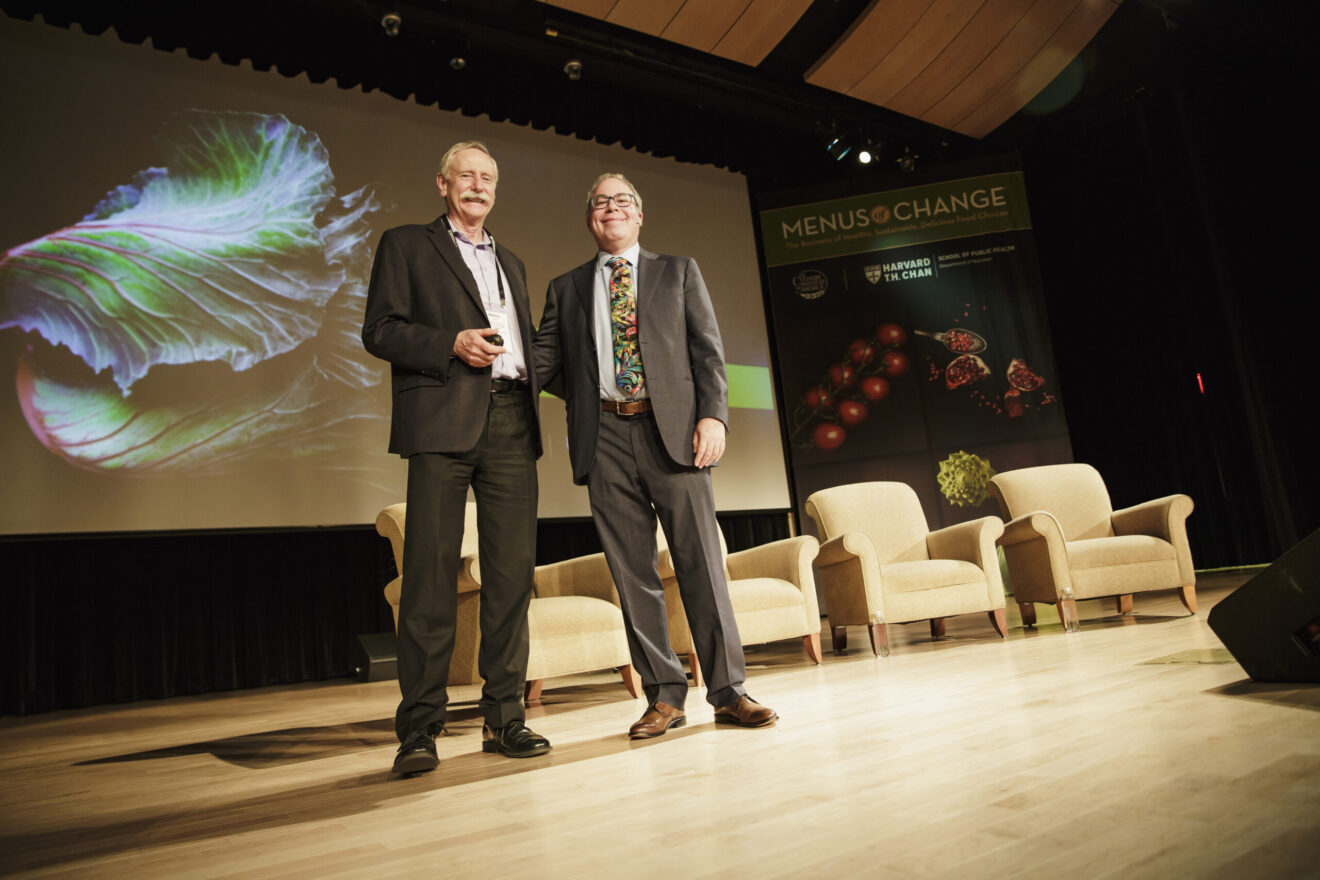Consumer appetites for healthier options and plant-forward dishes are on the rise, according to the 2017 Menus of Change Annual Report. The Culinary Institute of America and Harvard T.H. Chan School of Public Health released the report last week at the Menus of Change conference held at the CIA’s campus in Hyde Park, N.Y., where presenters and more than 400 attendees gathered to discuss the progress the food industry has made so far and what more can be done to improve health and sustainability in our food system. While issues ranged from climate change to transparency to moving meat off the center of the plate, the advice from presenters was the same: For real change to occur in the food industry, taste is paramount.
“It’s very clear that we in the scientific community need the help of the foodservice industry on this because…it has to be delicious as well as being healthy for humans and the planet,” Walter Willett, chair of the Department of Nutrition at the Harvard T.H. Chan School of Public Health and the Menus of Change Scientific and Technical Advisory Council said in his opening remarks at the conference. Throughout the three-day event, presenters echoed Willett’s sentiment that if the foods of the future are appealing from a taste perspective, they will have a much greater impact on the environment and public health.
Putting the greatest emphasis on taste is especially important to restaurant brands that aren’t traditionally viewed as destinations for healthy food, where consumers often visit with indulgence in mind. Sonic Drive-In certainly falls into this camp, with its menu of burgers, hot dogs and fully-loaded milkshakes, but the company announced at the conference that it is embracing the blended burger as a way to offer plant-forward food that doesn’t compromise on taste or contradict its brand identity. When Sonic begins tests of the Sonic Slinger, made with a blend of beef and mushrooms, it will be the first national quickserve chain to serve a blended burger, Scott Uehlein, vice president of product innovation at Sonic, announced at the conference.
The burger performed very well in testing with focus groups, Uehlein said, but it immediately became clear that an important part of the public rollout would be making sure customers knew that its flavor was a result of the meat and mushroom blend. “Our big takeway here is that you can’t sneak it in,” said Alicia Mowder, senior director of brand marketing for Sonic, who described the testing process and the backlash that came from testers who weren’t told up front that the burger was made with mushrooms. “Consumers were open to it with mushrooms in it, they actually liked it better once they knew it had it in there. They just didn’t like us being sneaky about it,” she said.
The importance of being up-front about ingredients was something that multiple presenters touched on throughout the conference. During a panel discussion on transparency, Jackie Bertoldo, senior manager of nutrition, performance and wellness at Stanford University, discussed how “stealth health” can backfire because it is viewed as trickery. The ultimate goal, she said, is to find a way to “connect with [diners’] value systems so once they leave your environment they continue to make those choices.”
For Kentucky-based barbecue chain Mark’s Feed Store, taste and value are most important to its client base, so sharing the story behind any menu changes is important to bringing consumers on board. “The story gives it the cause,” Director of Operations Mary Stebbins said during a panel discussion about instituting Menus of Change practices in multi-unit operations. If the chain implements a change with an eye toward improving public health or environmental sustainability that would drive up the price for guests, “we have to educate our staff to be able to tell that story of ‘we’re using local farmers’…that’s the type of story they want to hear,” said Stebbins, who also mentioned the key role of flavor, saying “taste is most important.”
Reflecting on the common themes of the conference in his closing address, Willett summed up the necessity of flavor with a call to action. “We can set up goals that are scientifically based, but we can’t bring people along unless the experience is delicious.”
__________________________________________________
If you enjoyed this article, join SmartBrief’s email list for more stories about the food and beverage industry. We offer 20 newsletters covering the industry from restaurants to food manufacturing.
